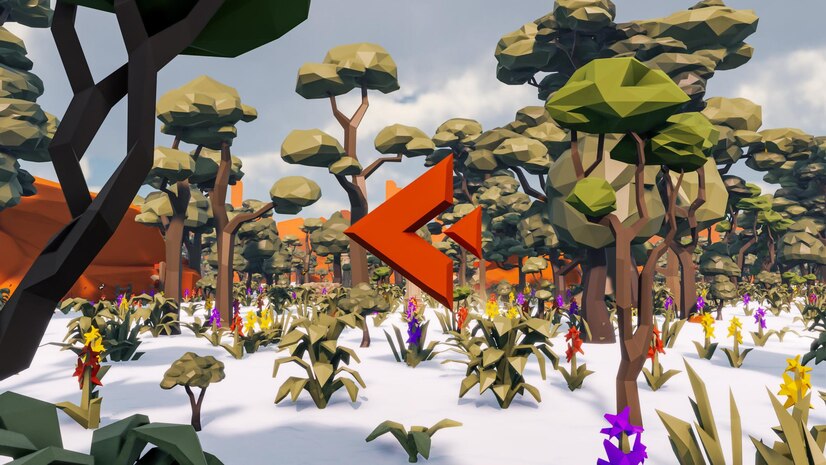The video game industry has undergone incredible transformations since its early days, thanks largely to advancements in 3D animation technology. In the 1980s and early 1990s, the basic graphics and 2D animation styles were the norm, with games being designed using pixel art and sprite-based characters. However, with the rise of more powerful computing technology and sophisticated 3D animation services, game developers have been able to create immersive, realistic worlds that draw players into the story and action like never before. This evolution has turned video games into one of the most dynamic, rapidly advancing fields in digital entertainment.
In this blog post, we’ll explore the history and evolution of 3D animation in video games, examining the technological advances and animation techniques that have transformed the industry. We’ll also discuss how leading 3D animation services and animation studios in Los Angeles have contributed to this remarkable growth.
1. Early Days of Animation in Video Games
The journey of animation in video games began in the 1970s and early 1980s, a period defined by simple 2D sprites. Games like Pong (1972) and Space Invaders (1978) used straightforward mechanics with basic animation loops. Characters and objects were often represented as single-pixel sprites, with limited movement and interactivity.
By the 1980s, games started incorporating more complex animation techniques. Super Mario Bros. (1985) added personality to its characters through bouncy, dynamic animations, demonstrating that even simple pixel art could convey expressive movements.
2. The Rise of 3D Animation in the 1990s
The true beginning of 3D animation in video games occurred in the early 1990s, with the release of the first 3D-capable game consoles and PCs. This marked the start of what would become a defining evolution in game design, as developers began experimenting with creating fully-rendered 3D worlds.
-
Polygonal Graphics: Games like Virtua Fighter (1993) and Star Fox (1993) showcased the use of polygonal graphics, where objects and characters were constructed using simple polygons. Although primitive by today’s standards, this technique marked a significant shift from 2D sprites to three-dimensional models.
-
Early 3D Platforms: With the release of the PlayStation in 1994 and the Nintendo 64 in 1996, developers gained access to platforms capable of more advanced 3D graphics. Super Mario 64 (1996) was a groundbreaking example, offering a full 3D environment where players could freely explore and interact with objects. This game set the stage for 3D animation’s integration in both character and environmental design.
3. Advancements in Motion Capture and Character Animation (2000s)
The 2000s saw significant advancements in character animation, as developers focused on making characters look and move more naturally. Key technologies and techniques emerged during this period that brought video game animations to new heights.
-
Motion Capture (MoCap): Motion capture technology became a standard tool for game developers looking to create lifelike character movements. With MoCap, animators could record the movements of real actors and apply those motions to digital characters, making them move, fight, and react in realistic ways. Games like Grand Theft Auto III (2001) and Half-Life 2 (2004) showcased more fluid animations and realistic character interactions, marking an era where 3D animation truly elevated gameplay experiences.
-
Facial Animation and Emotional Depth: Developers also started focusing on facial animations to bring more emotional depth to their characters. Techniques like blend-shape animation and skeletal-based facial rigs allowed animators to convey complex emotions. L.A. Noire (2011), developed by Rockstar Games, became famous for its groundbreaking facial animation technology, allowing characters to emote with nuanced expressions.
4. Photorealism and Hyper-Realistic Animation (2010s)
As hardware capabilities grew stronger, so did the demand for highly realistic graphics in video games. In the 2010s, 3D animation techniques began focusing on photorealism, with high-definition textures and realistic lighting that rivaled CGI in movies.
-
Real-Time Rendering and Lighting: Advances in real-time rendering allowed developers to create dynamic lighting, shadows, and reflections that responded to players’ actions. Games like The Witcher 3 (2015) and Red Dead Redemption 2 (2018) made extensive use of real-time lighting techniques to create stunning, lifelike environments.
-
3D Scanning and Texture Mapping: Many game developers started using 3D scanning to create hyper-realistic textures for characters and environments. By scanning real-world textures and applying them to 3D models, developers could create visuals that blurred the line between game and reality.
-
Realistic Physics and Soft Body Dynamics: Games increasingly incorporated realistic physics, allowing objects to react more naturally to forces like gravity and impact. Soft body dynamics were applied to create realistic simulations of skin, muscles, and even clothes, making movements appear smoother and more convincing.
5. Virtual Reality (VR) and Augmented Reality (AR) Integration
In recent years, 3D animation services have adapted to support virtual and augmented reality applications in gaming. By using advanced 3D animation and rendering techniques, studios have managed to make VR games feel more immersive and interactive, allowing players to explore worlds from a first-person perspective.
-
Enhanced Player Immersion: VR platforms like Oculus Rift and PlayStation VR have introduced new dimensions of interaction. Games like Beat Saber (2018) and Half-Life: Alyx (2020) provide immersive 3D environments where players can move, look around, and engage with objects directly, bridging the gap between the player and the game world.
-
AR-Based Mobile Games: AR games like Pokémon Go (2016) use 3D animation to overlay digital creatures onto the player’s real-world environment. This technology highlights the importance of 3D animation studios, particularly those in tech hubs like Los Angeles, in pushing forward new interactive game experiences.
6. The Role of AI and Machine Learning in Animation
Artificial Intelligence (AI) and machine learning have become crucial in automating and enhancing 3D animation. This technology enables more responsive character animations and smarter NPC (non-player character) interactions, making game worlds feel more vibrant and realistic.
-
Procedural Animation: AI-based procedural animation allows characters to adapt their movements to their environments automatically. Instead of relying on pre-set animations, games can now use algorithms to adjust character movements based on real-time environmental factors, such as terrain or player inputs. This was notably used in Assassin’s Creed and The Last of Us Part II.
-
Enhanced NPC Behavior: Machine learning algorithms are also used to improve NPC behavior, making them more responsive to the player’s actions and decisions. NPCs in games like Cyberpunk 2077 use AI to react realistically to different scenarios, creating a more immersive experience for players.
7. The Future of 3D Animation in Video Games
Looking forward, the future of 3D animation in gaming is poised to become even more innovative and transformative. Advances in rendering technology, including ray tracing, promise better real-time visuals, while the rise of cloud gaming offers new possibilities for delivering high-quality 3D animation experiences across multiple devices.
-
Ray Tracing and Real-Time Graphics: Ray tracing technology is becoming more common in modern video games. By simulating how light interacts with surfaces in real-time, ray tracing can create visually stunning effects that enhance realism.
-
Cloud Gaming and Streaming Services: As cloud gaming becomes more popular, high-quality 3D animations can be streamed to devices that might not have the hardware capabilities for advanced rendering. Services like Google Stadia and Nvidia GeForce Now offer new avenues for distributing and experiencing cutting-edge games, enabling more players to access realistic 3D animations.
The Influence of Los Angeles Animation Studios
The rise of animation studios Los Angeles has had a profound impact on video game design. Known for its rich tradition in film and digital entertainment, Los Angeles has become a central hub for creative animation studios that merge cinematic storytelling with innovative 3D animation services. Studios in the region have contributed to blockbuster games, partnering with major developers to provide high-quality animations and motion graphics.
These animation studios in Los Angeles continue to push the boundaries of what’s possible in 3D animation, using advanced techniques to blend the worlds of film, television, and gaming into cohesive, visually-stunning experiences.
Conclusion
The evolution of 3D animation in video game design reflects the industry’s drive to create more immersive and realistic experiences. From the basic polygonal shapes of the 1990s to the photorealistic characters and environments of today, 3D animation has continually elevated gaming to new heights. With the help of advanced 3D animation services and visionary animation studios in Los Angeles, the future of 3D animation in video games looks brighter than ever.
As technology advances, the line between reality and the digital world will continue to blur, allowing players to experience richly detailed, interactive worlds that were once the stuff of dreams.




